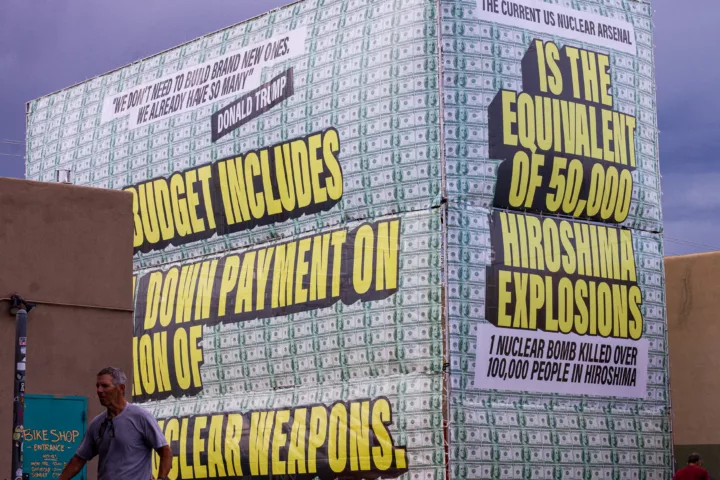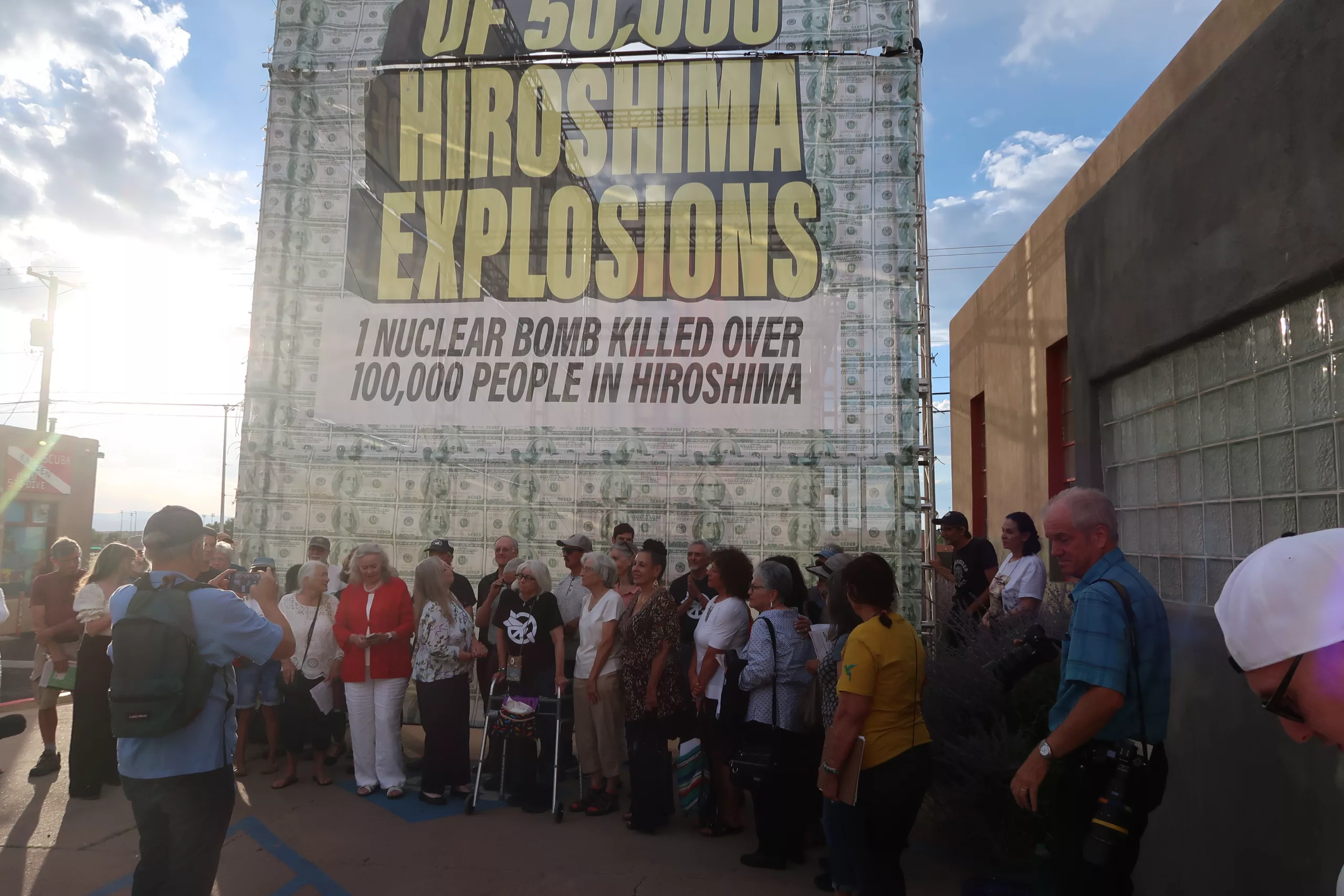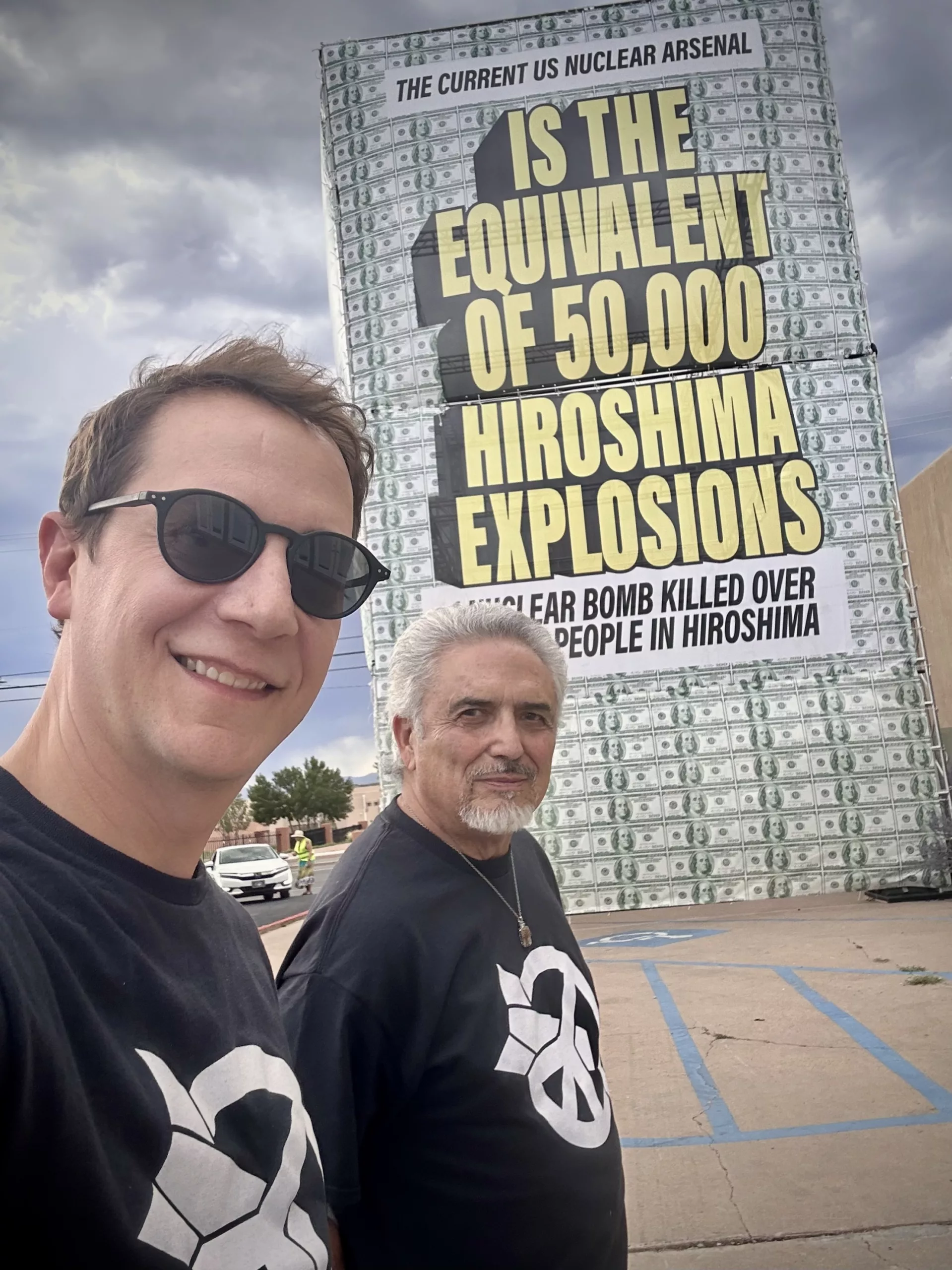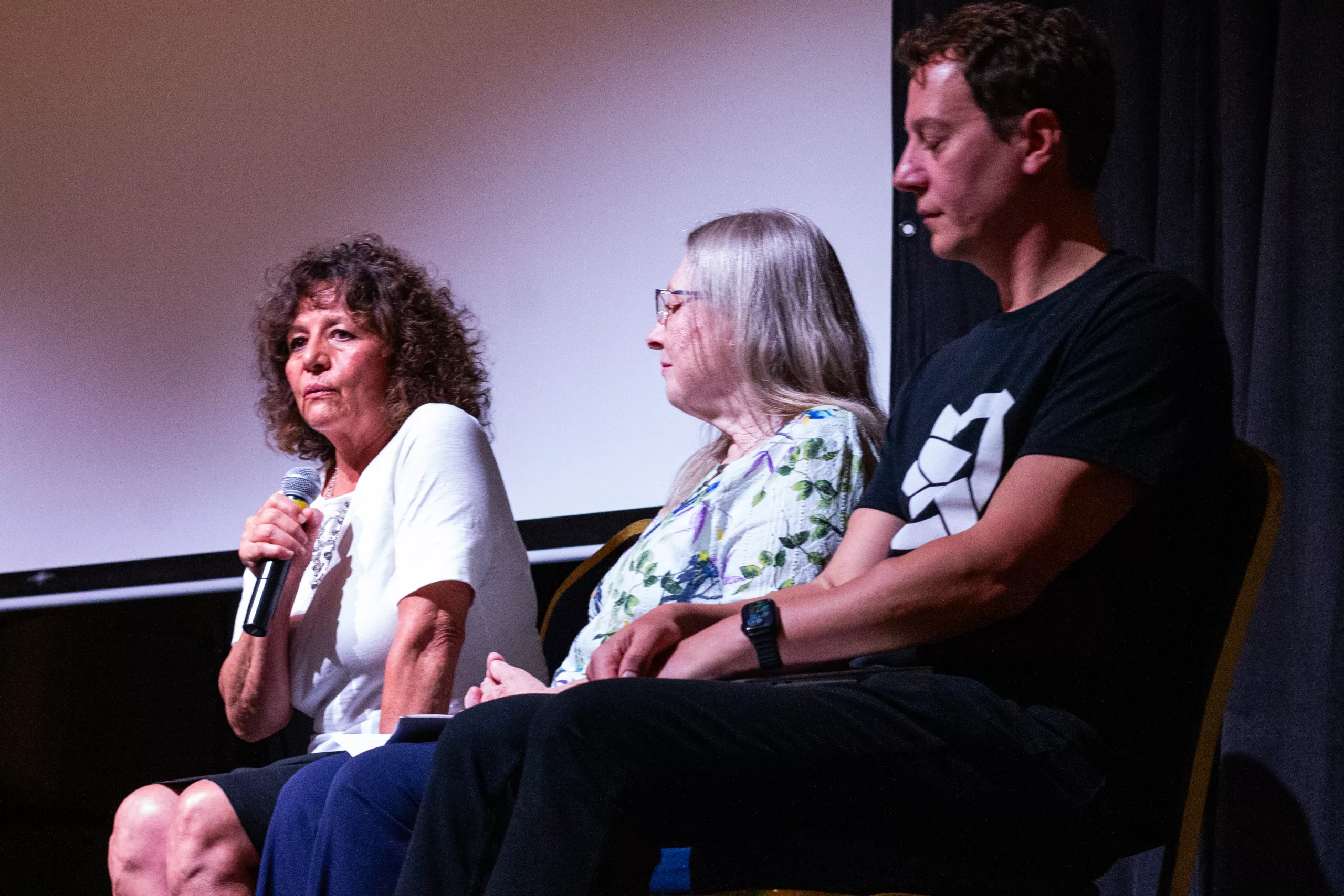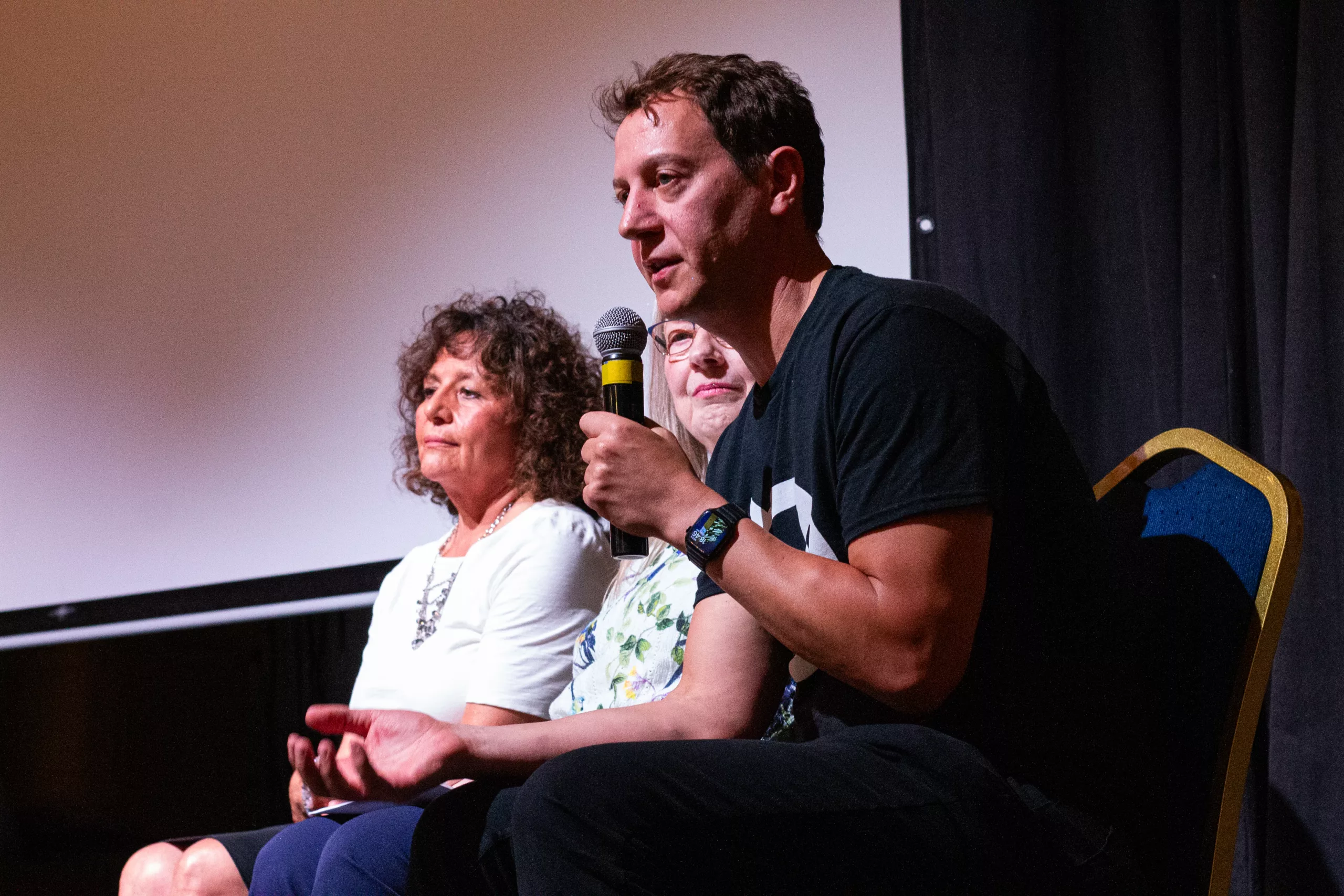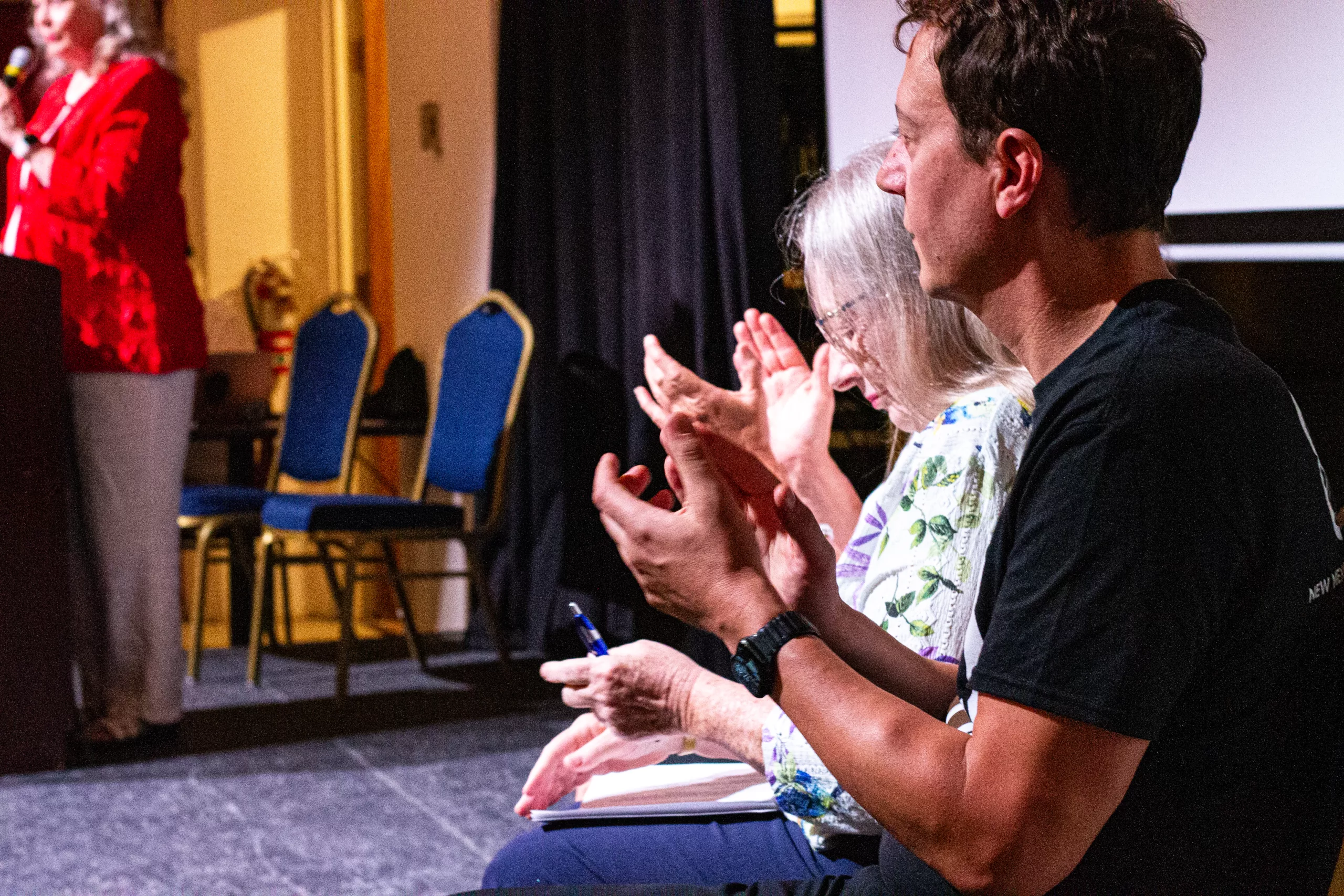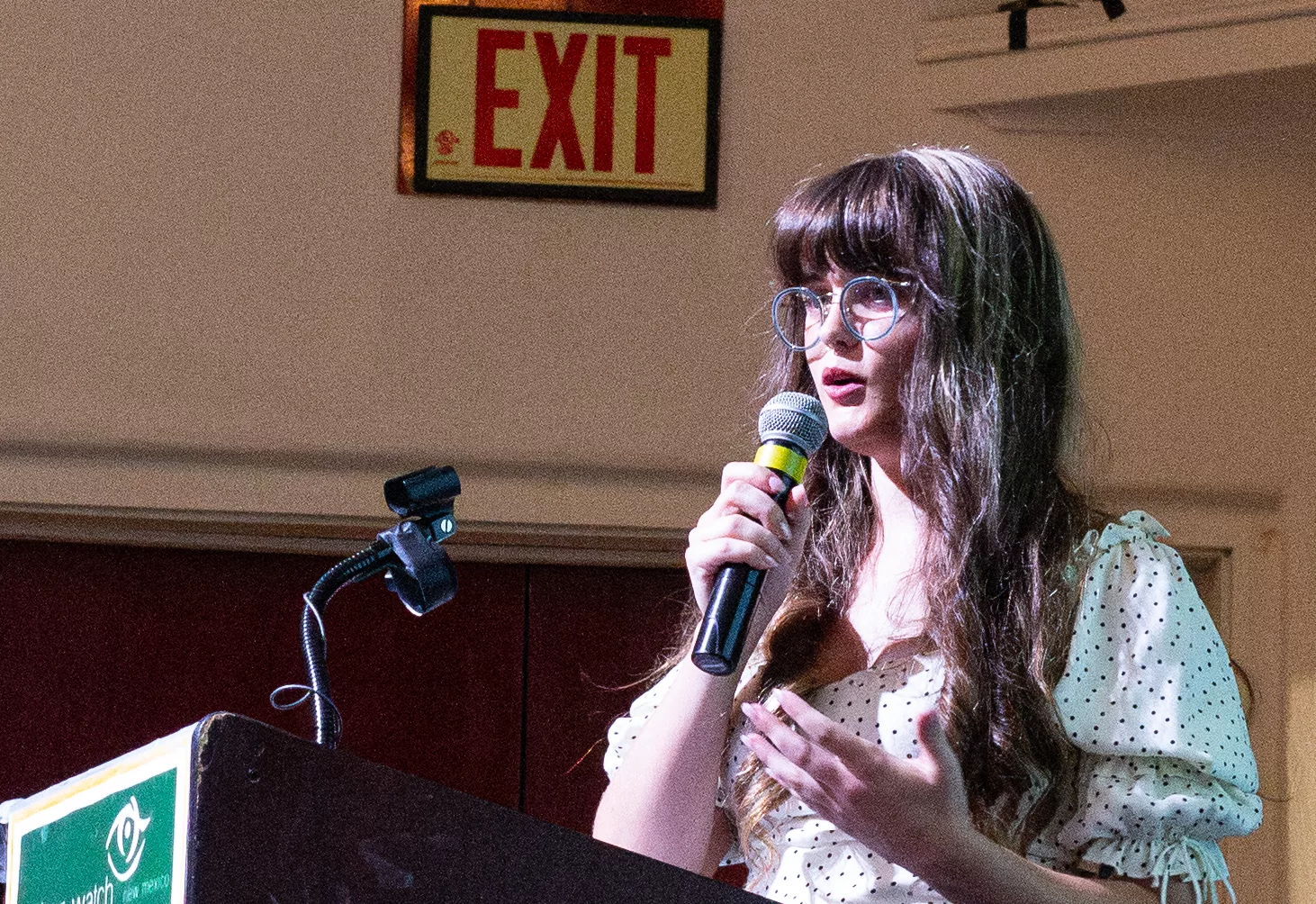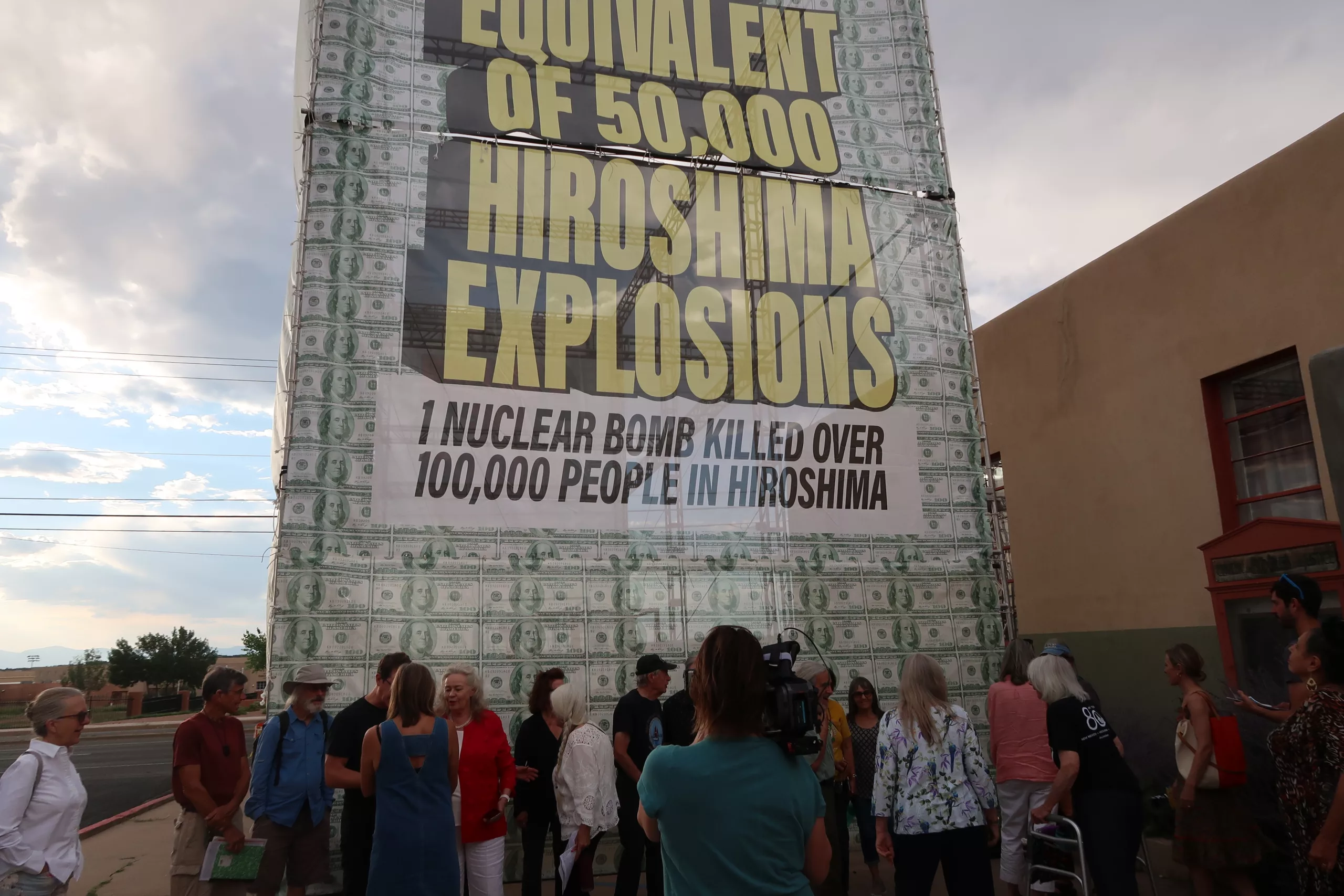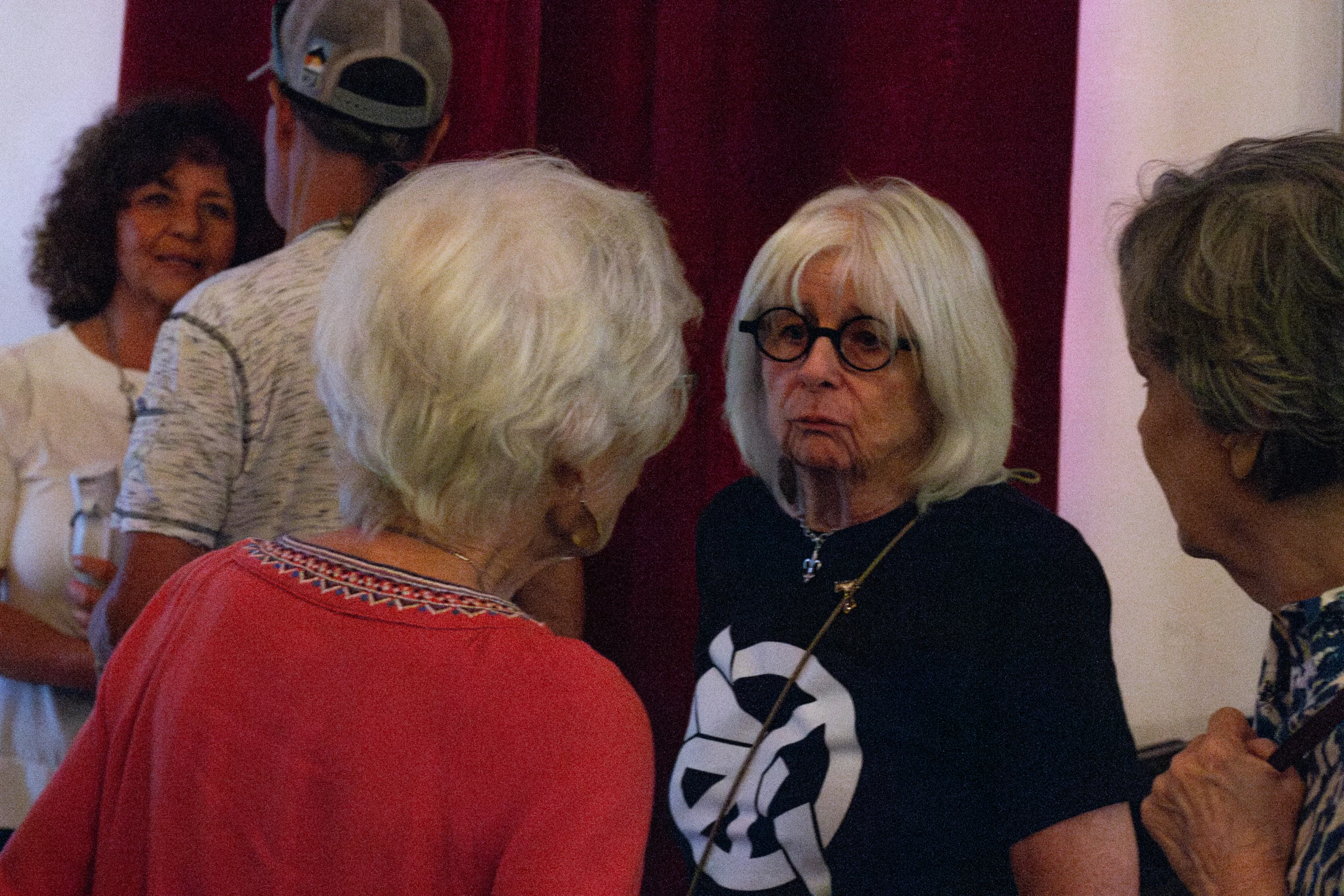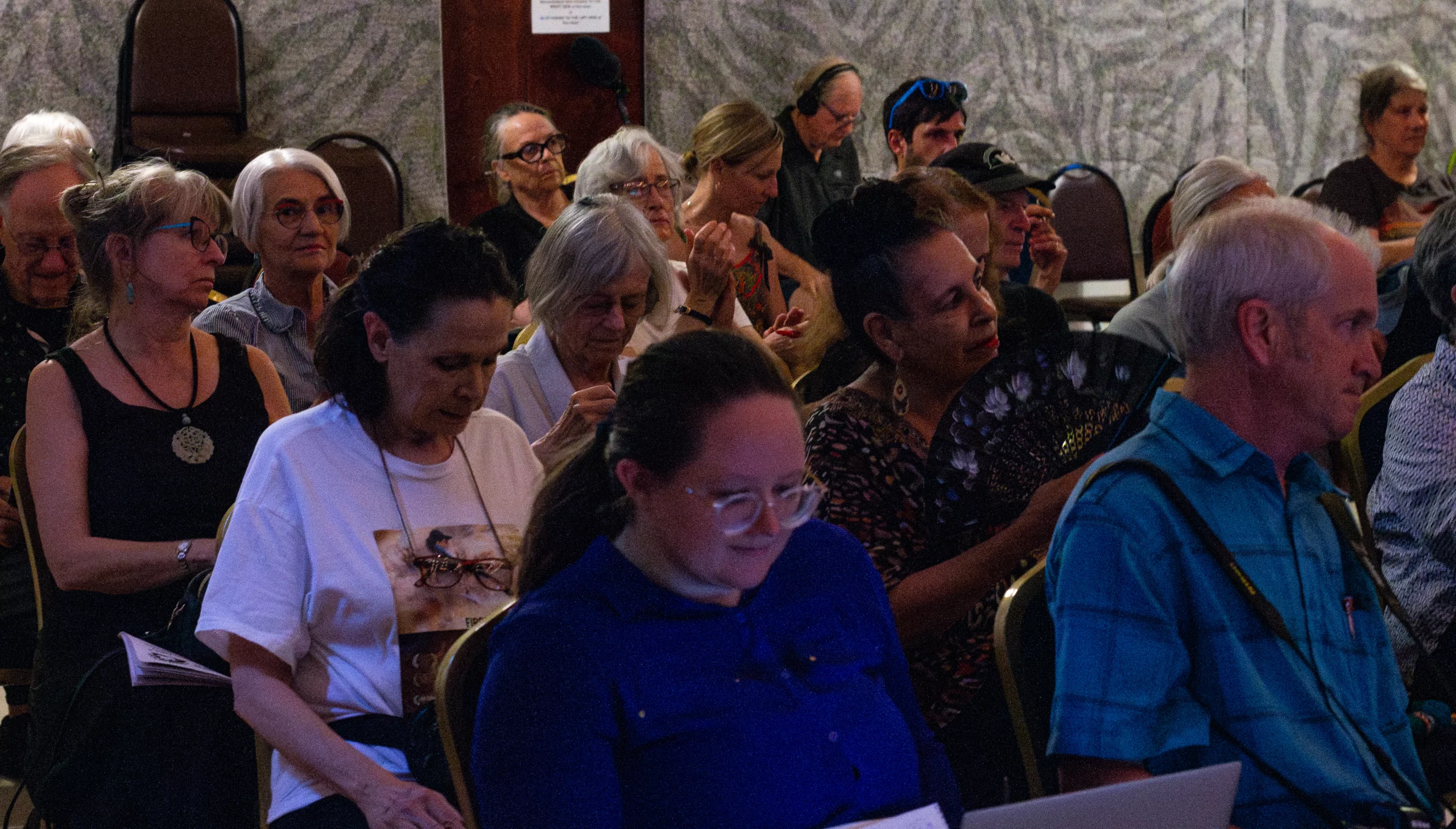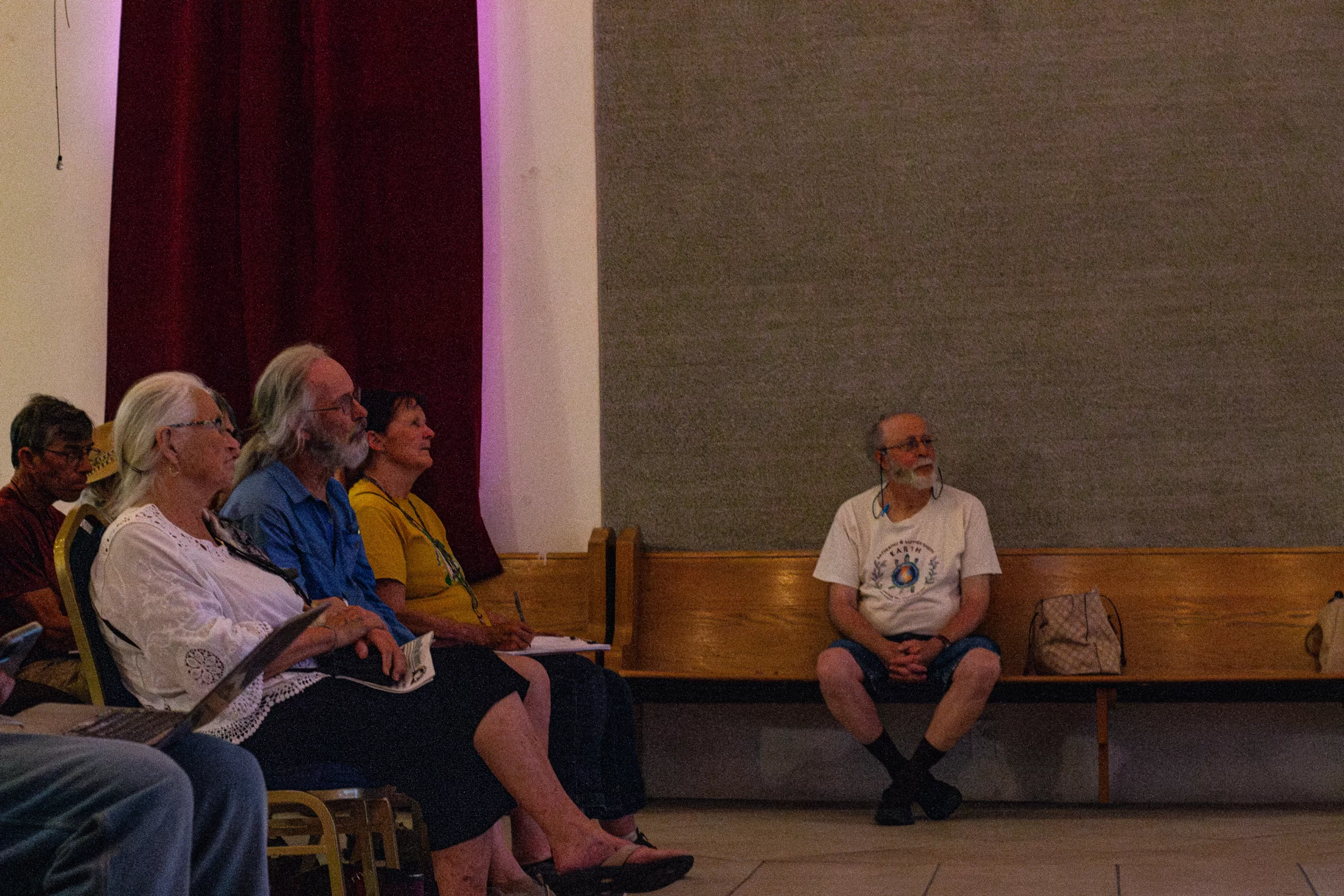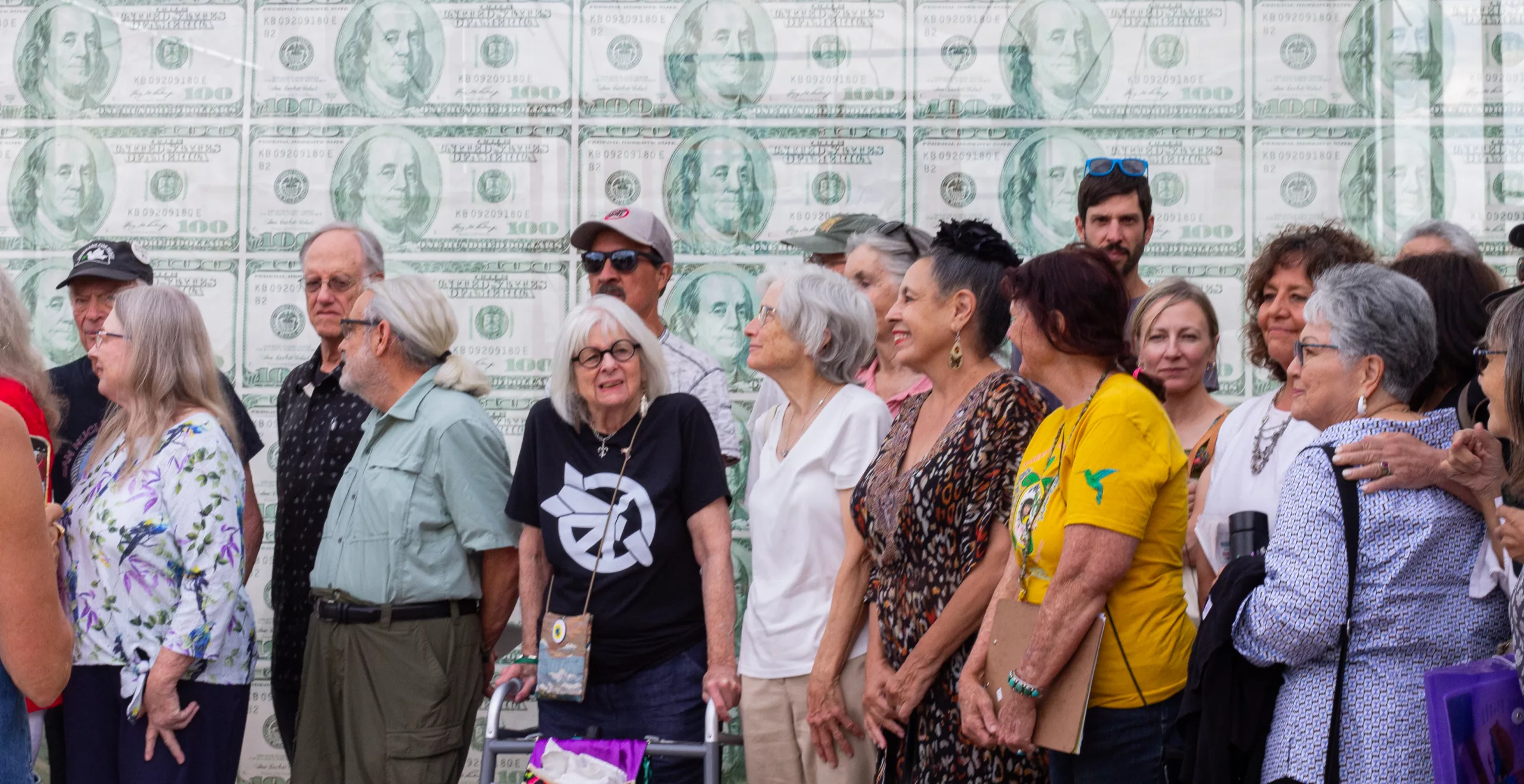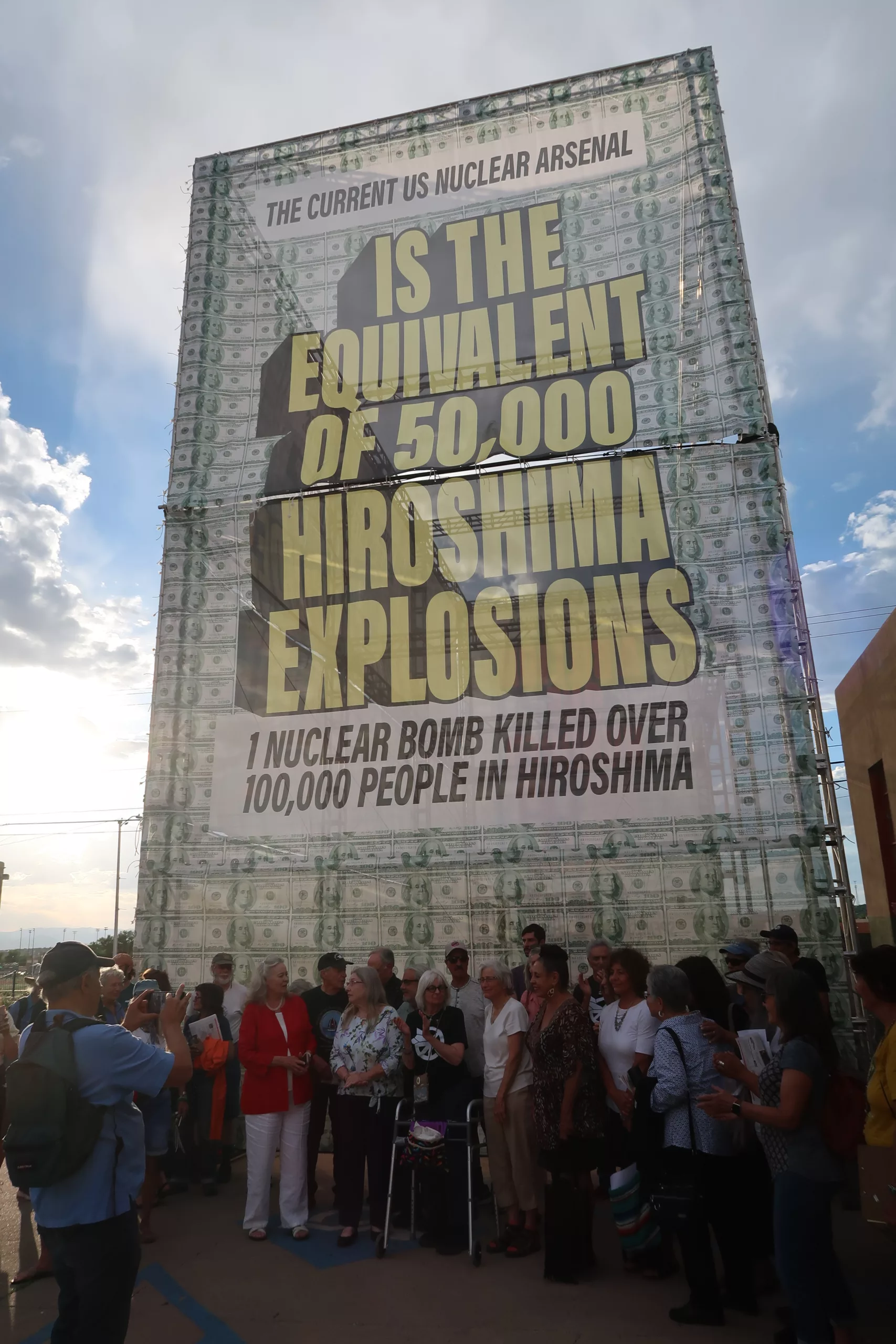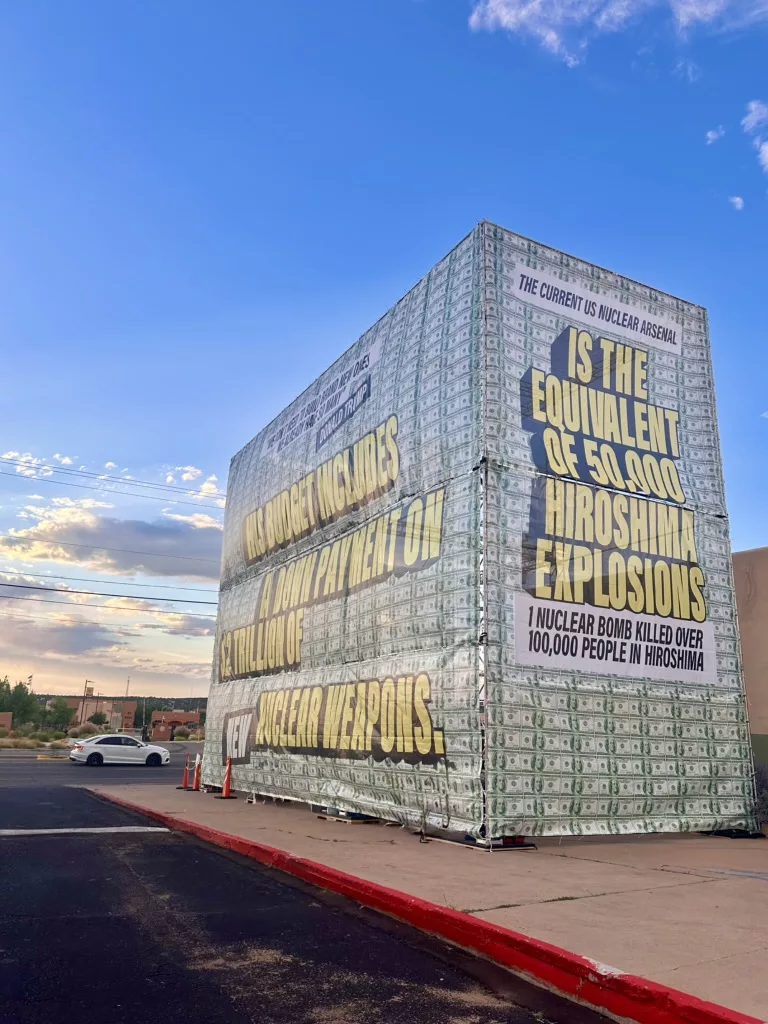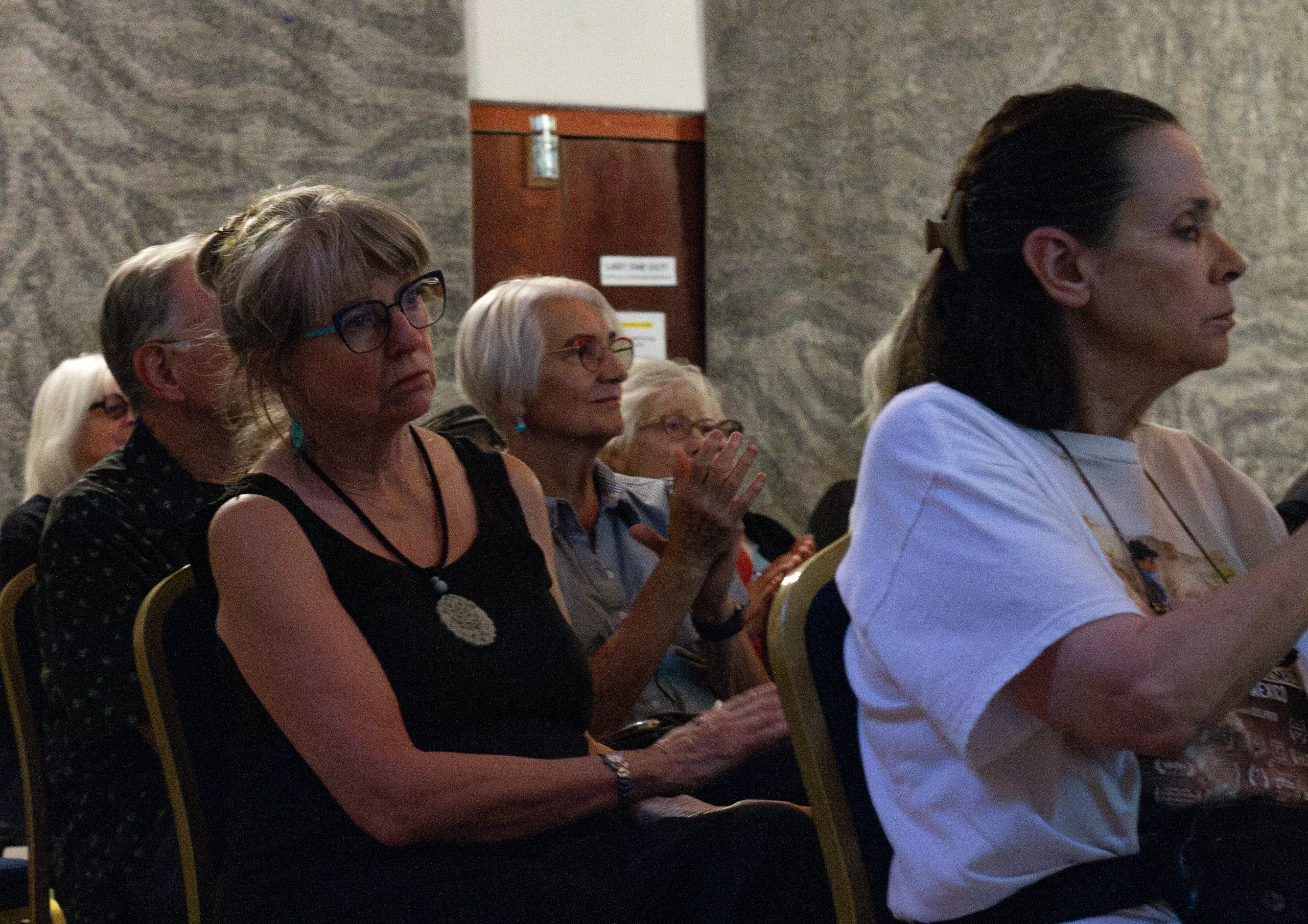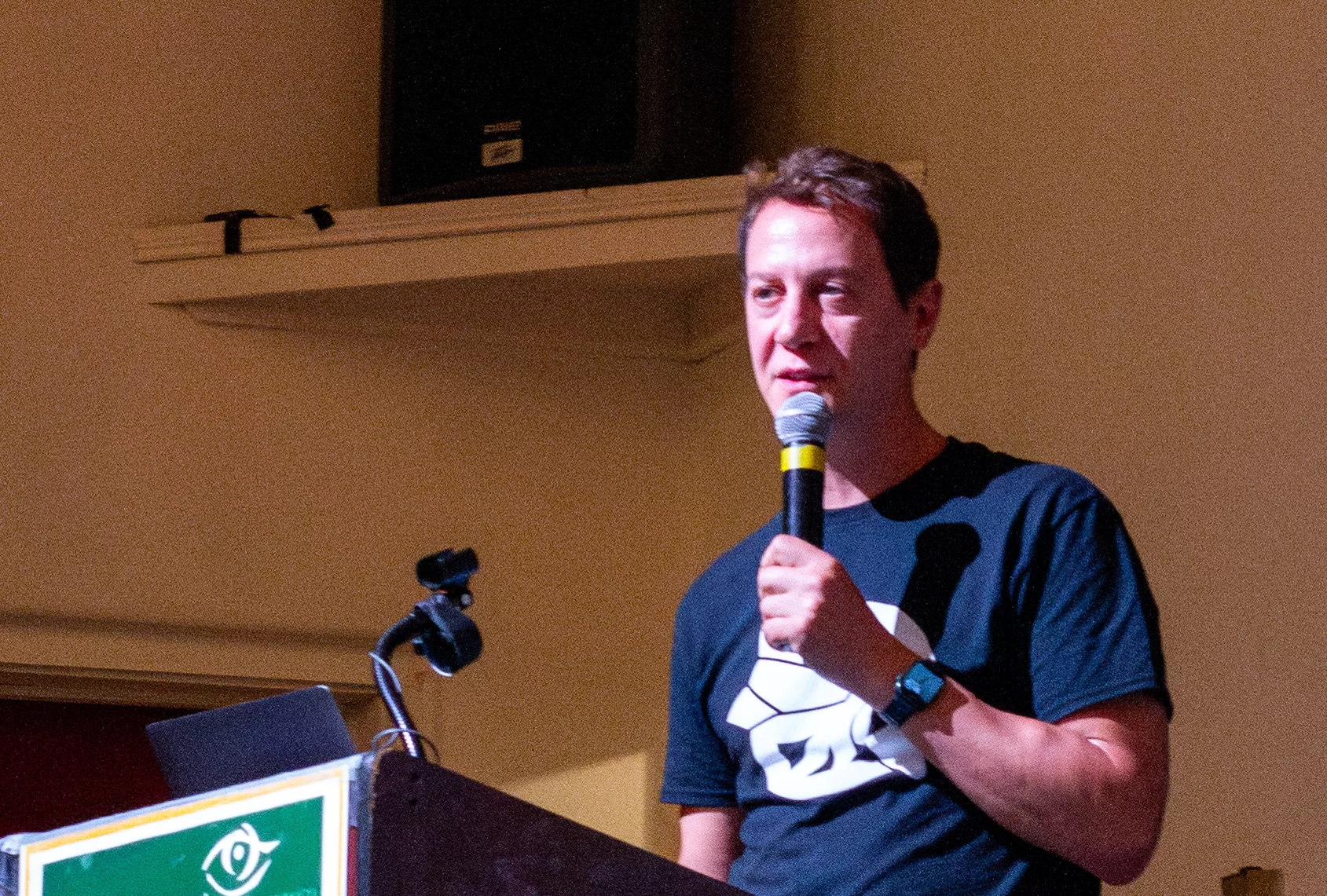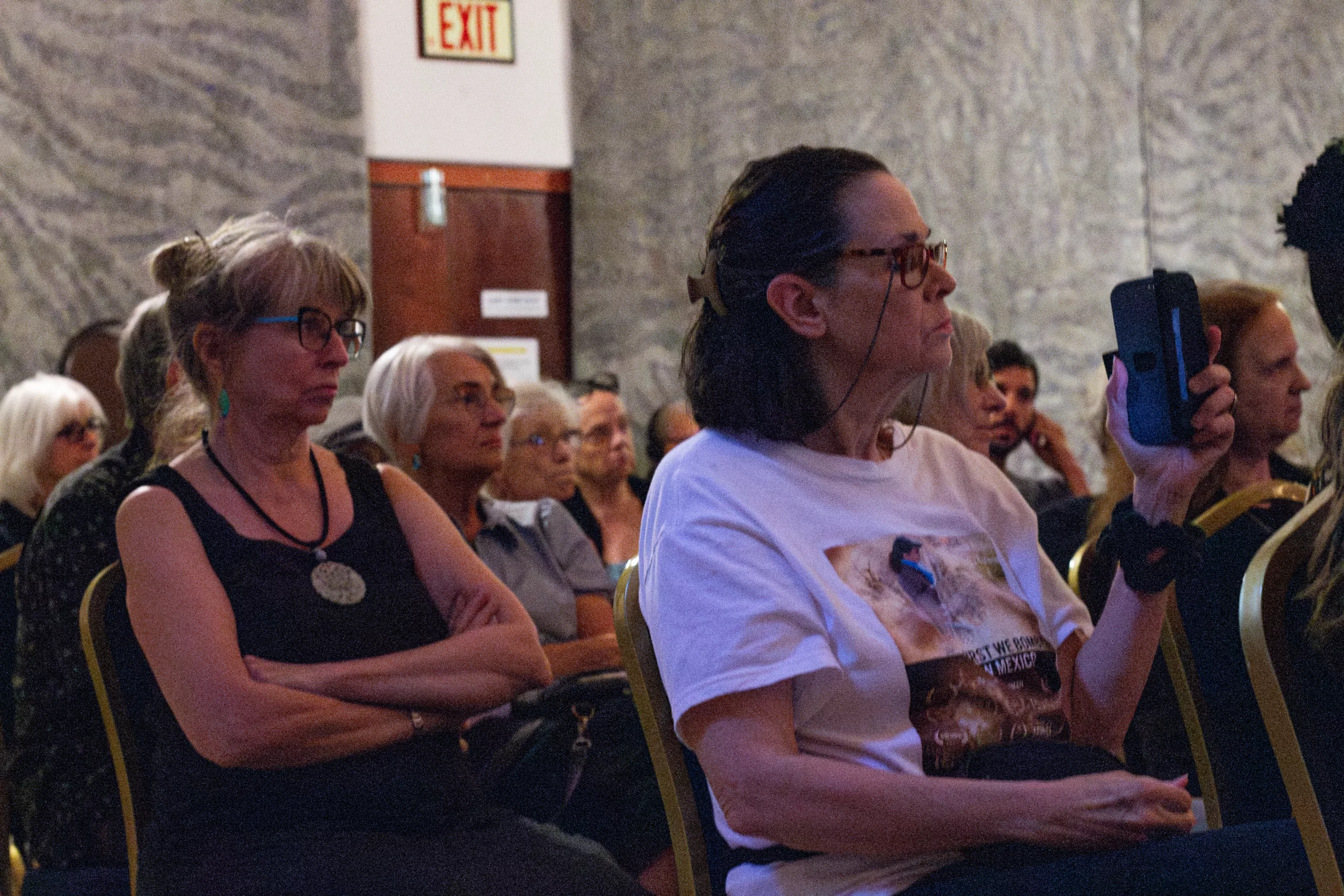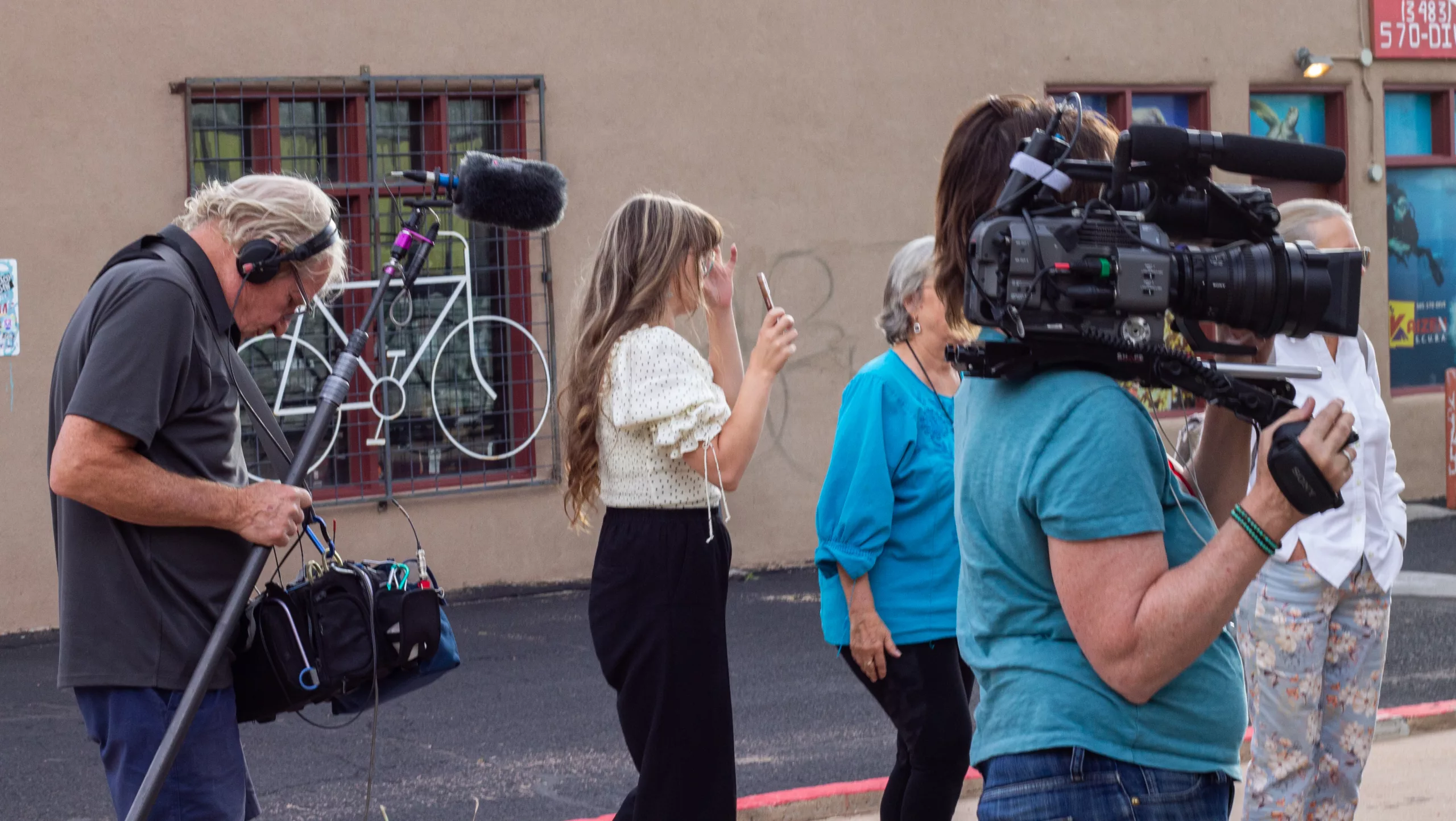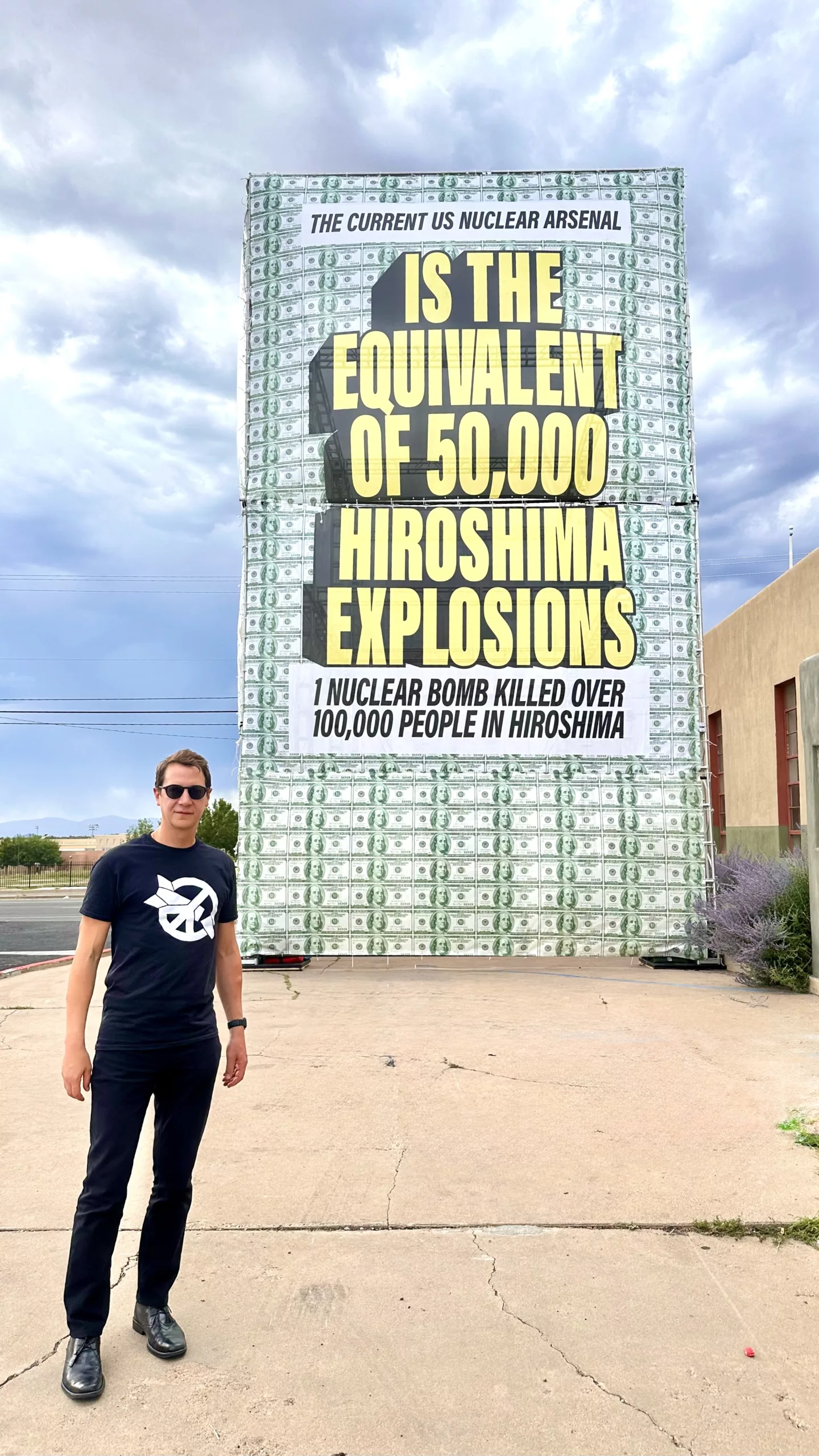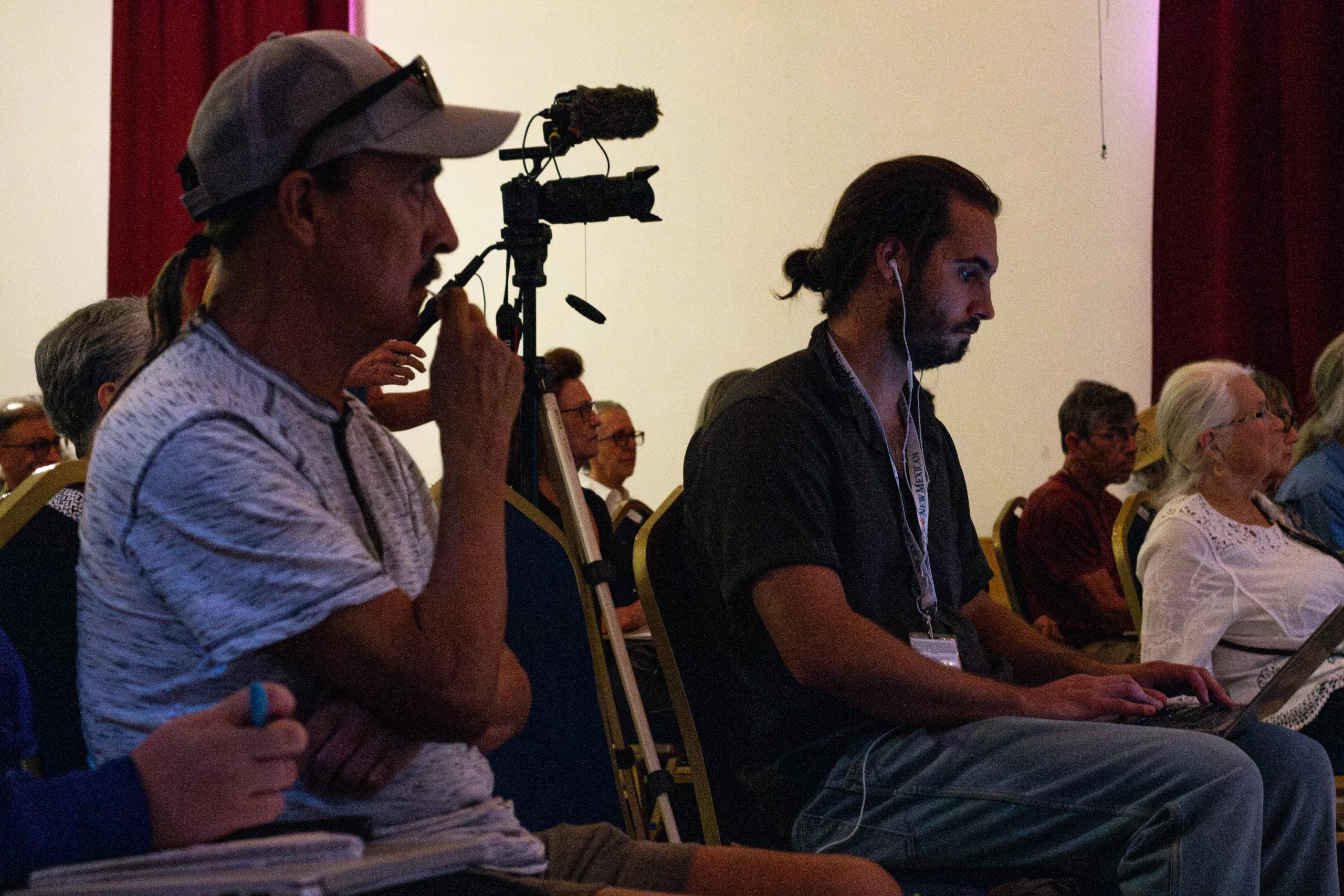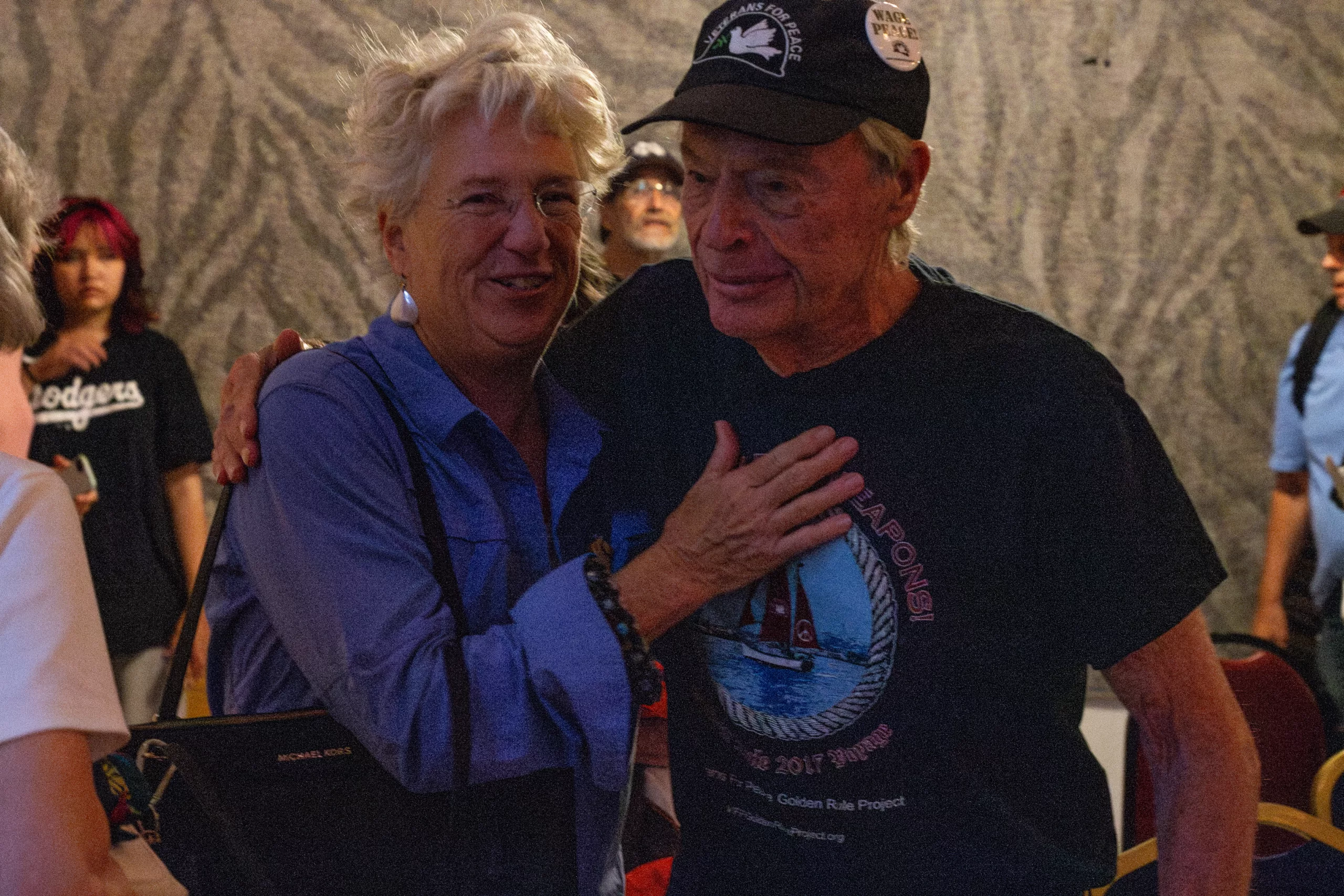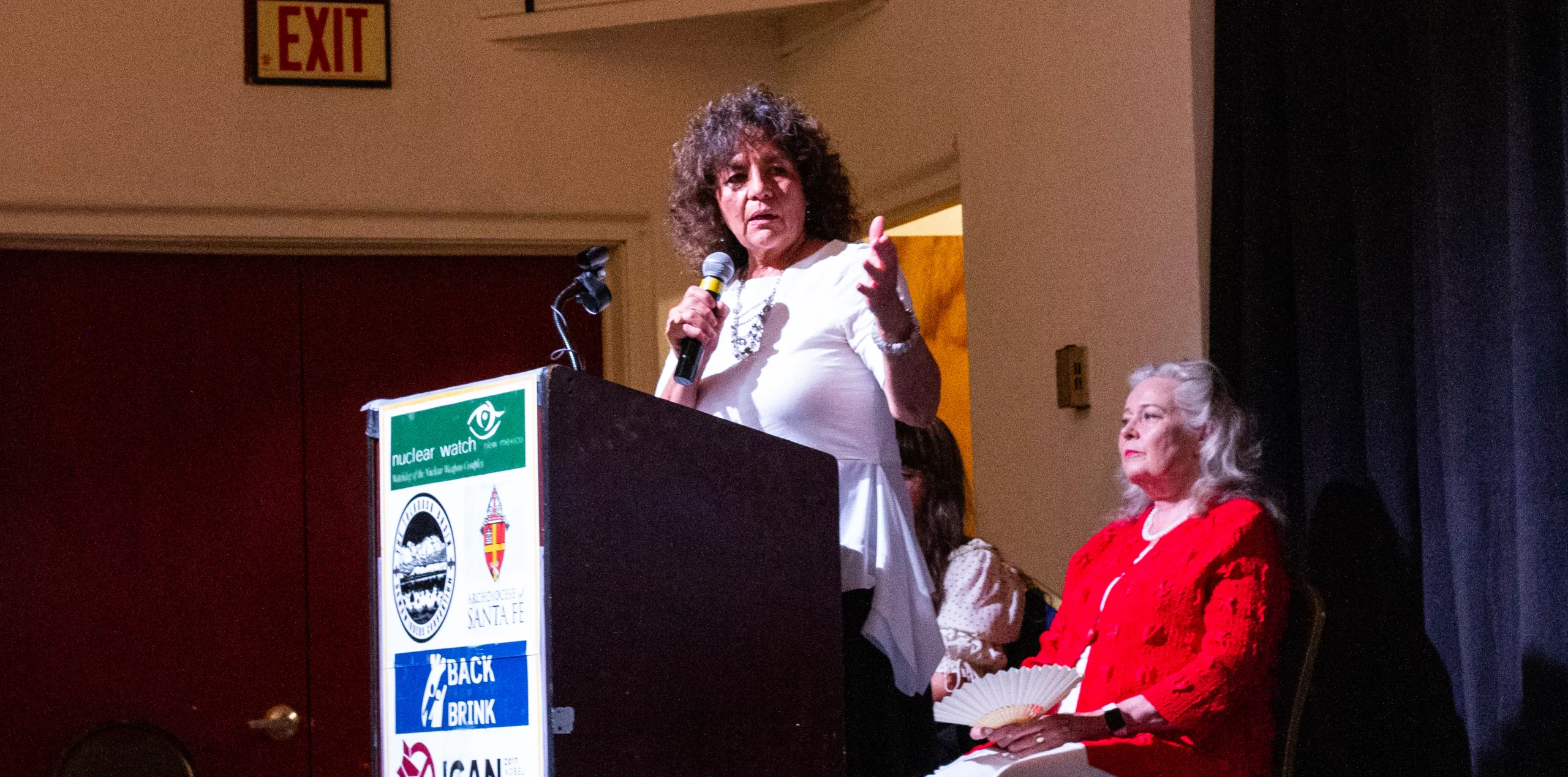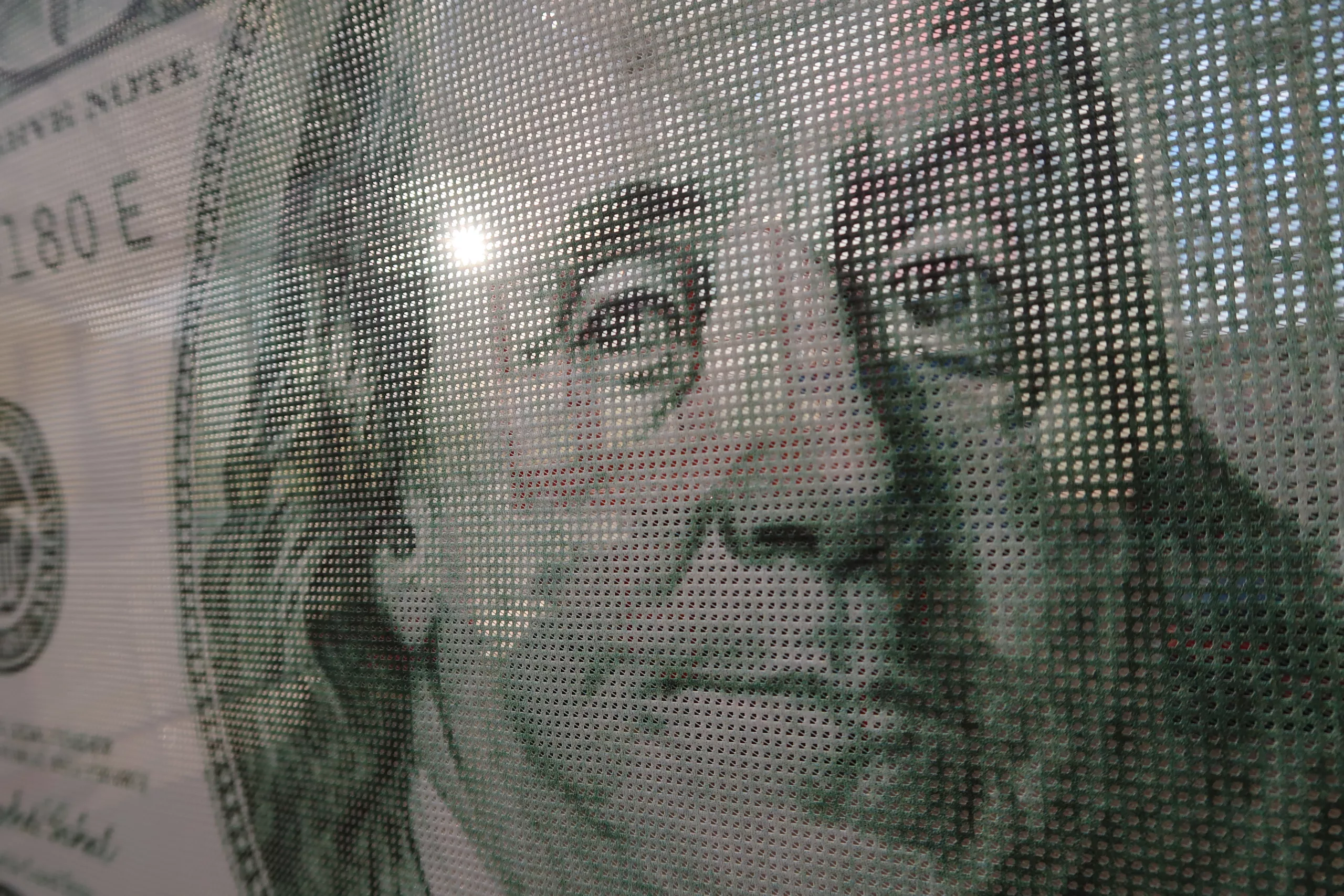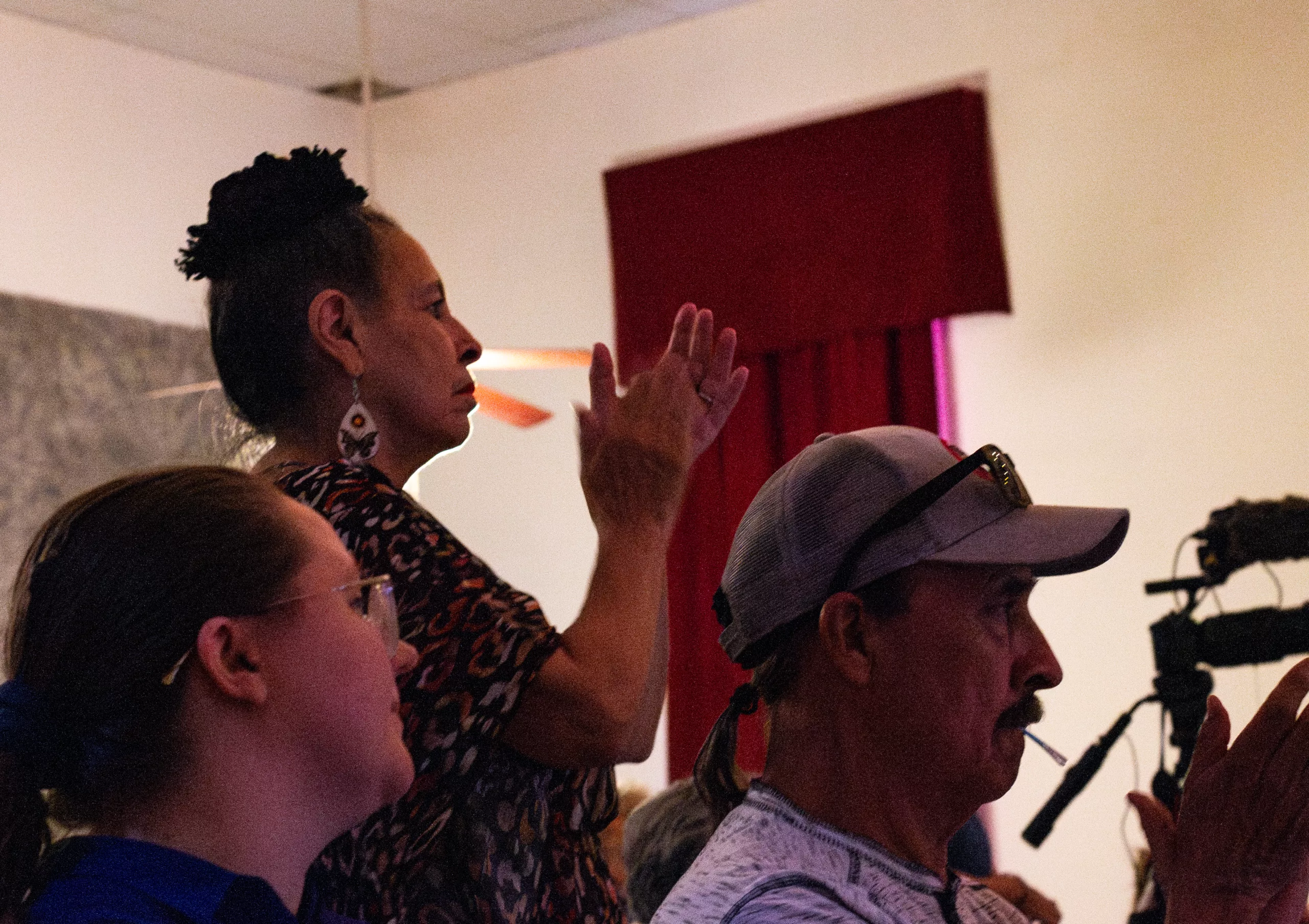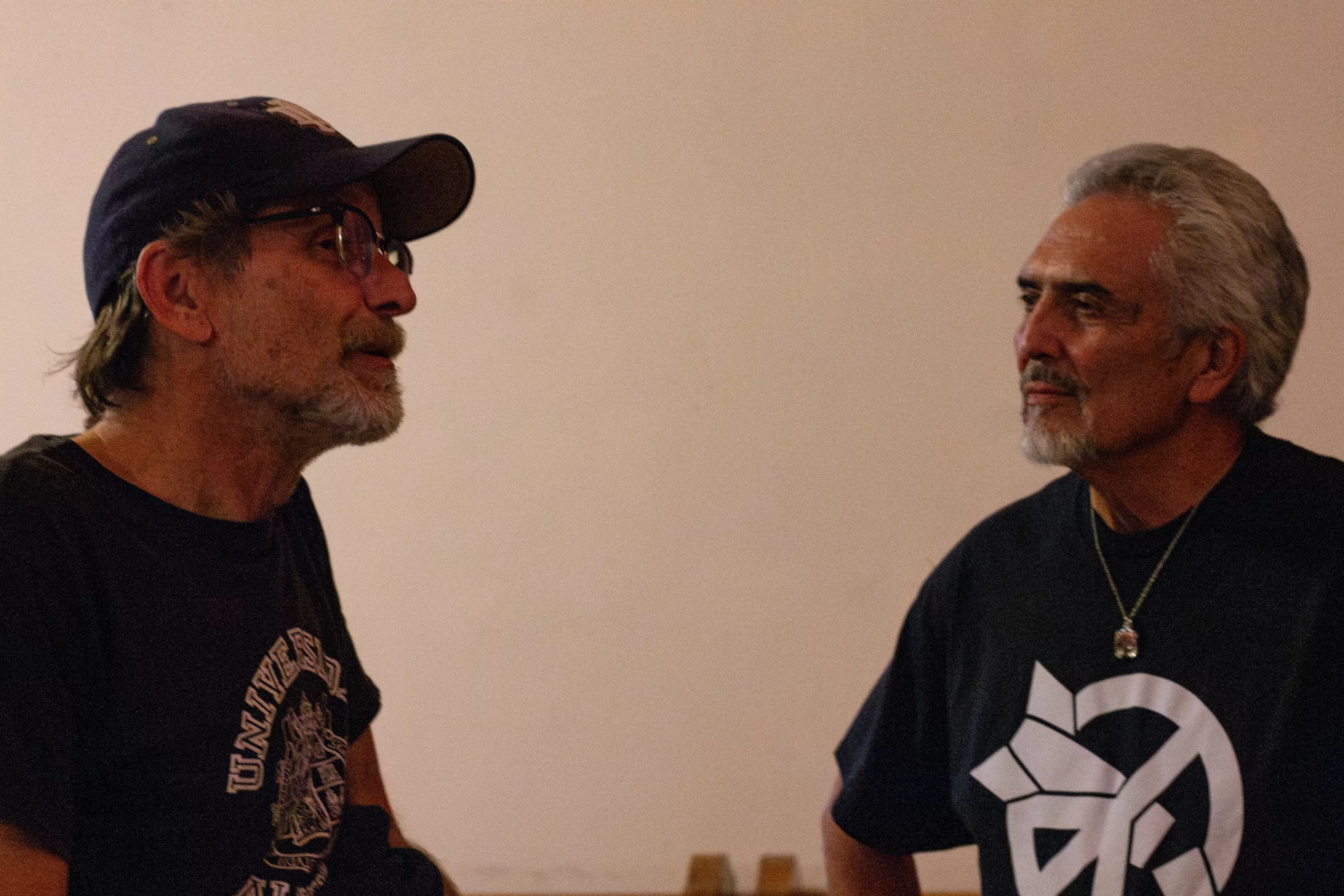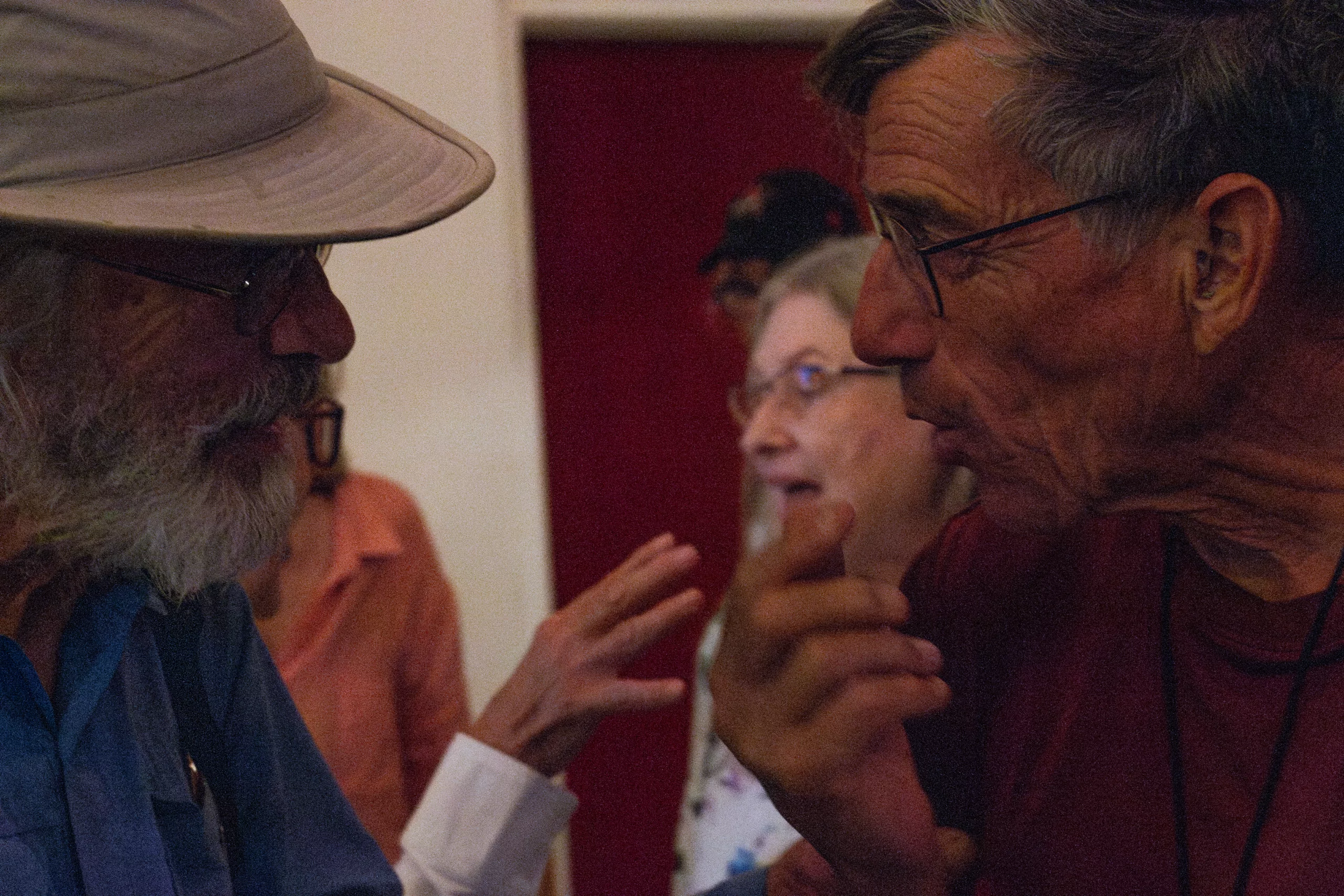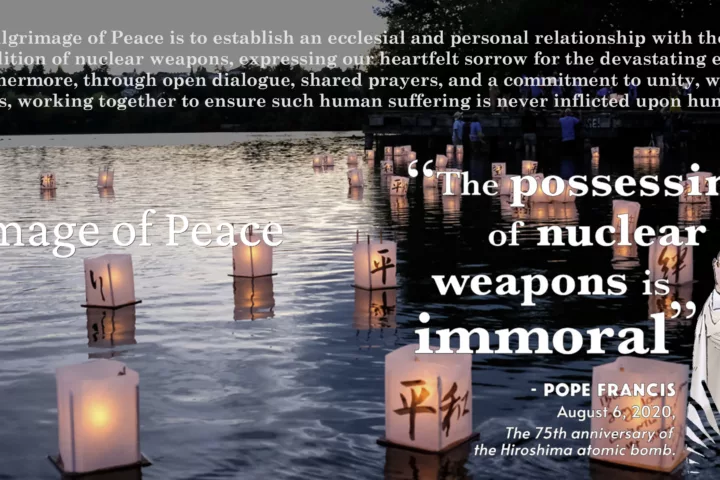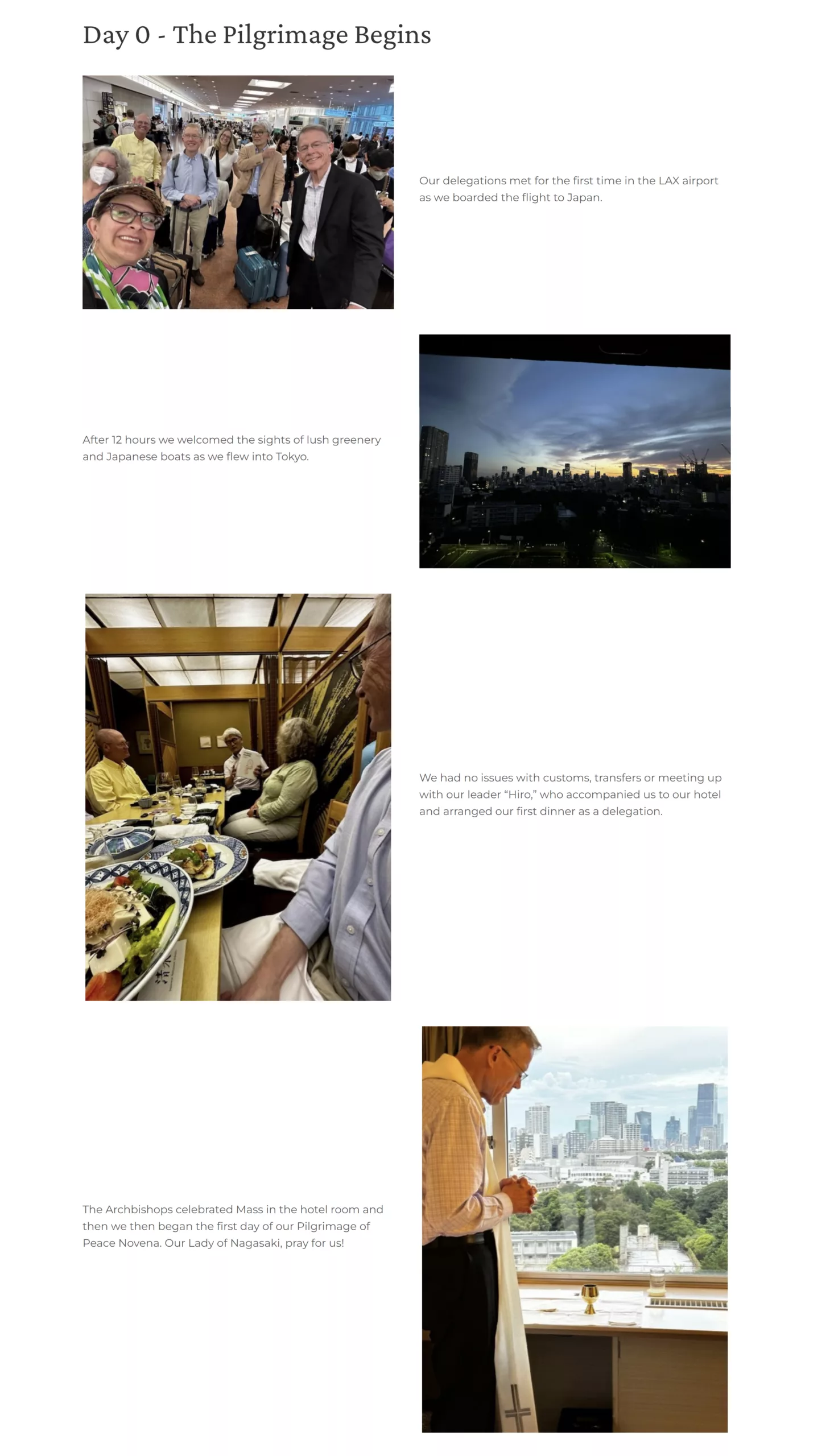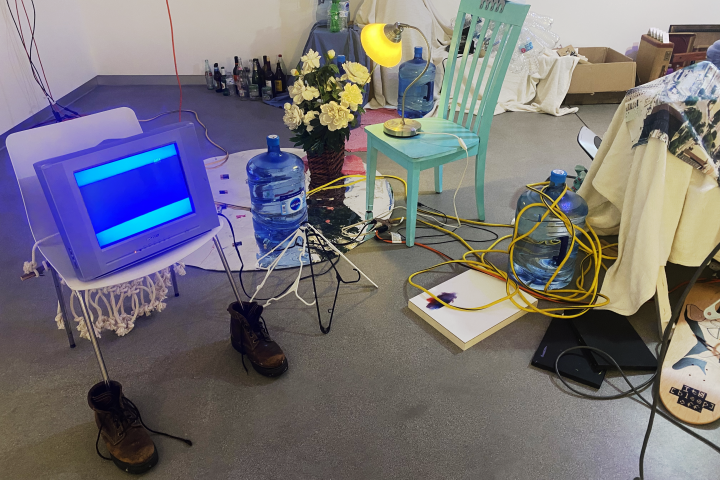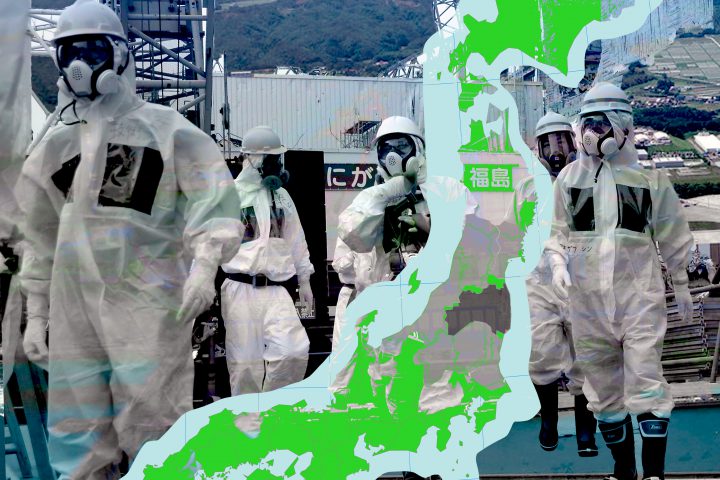Eighty Years Later, it is Beyond Time to Get Rid of Nuclear Weapons.
Last week on August 6, 2025, the 80th anniversary of the U.S. atomic bombing of Hiroshima, community members gathered at the Center for Progress and Justice on Cerrillos Road in Santa Fe to honor the solemn occasion and demand an end to the ongoing nuclear weapons harm and destruction that first began here in New Mexico.
The event was organized by Nuclear Watch New Mexico in collaboration with the Up in Arms campaign by Ben Cohen, co-founder of Ben & Jerry's, to reduce military and nuclear weapons spending, the International Campaign to Abolish Nuclear Weapons (winners of the 2017 Nobel Peace Prize), the Santa Fe Archdiocese, the Back from the Brink New Mexico Hub, and the Tularosa Basin Downwinders Consortium. It centered around a massive public art installation from Up in Arms of a towering cubic structure framed by messages on top of images of $100 bills. The structure is sized to literally hold $100 billion of those bills, respresenting what the U.S. spends every year on nuclear weapons (the total cost of nuclear weapons "modernization" is up to $2 trillion). Visible to thousands of drivers each day, the large installation pressures viewers to reckon with the scale of this cost and to imagine what else those resources could make possible. A prominent message on one of the four sides quotes the president in saying, "'We don't need to build brand new ones. We already have so many,' — Donald Trump" and below it, "His budget includes a down payment of $2 trillion of nuclear weapons." Another side reads, "The current U.S. nuclear arsenal is the equivalent of 50,00 Hiroshima explosions. One nuclear bomb killed over 100,000 people in Hiroshima."
The installation will remain on display for the foreseeable future, GO SEE IT NOW! 1420 Cerrillos Road, Santa Fe, NM 87505.
During the event, speakers Archbishop John C. Wester (by video from Japan), Tina Cordova of the Tularosa Basin Downwinders, Sophie Stroud from Nuclear Watch New Mexico, Anne Pierce-Jones from Back from the Brink, Ben Cohen representing Up in Arms, and Seth Shelden from ICAN all gave concrete steps and actions that concerned citizens can take to help promote a safer world. The speakers were presented by former Santa Fe County Commissioner Anna Hansen, who stated, “Disarmament is the only answer. I have spent my life working to end the nuclear cycle, as many have, and most of us in this room have never known a world without nuclear weapons.”
Speakers drew connections between the devastation in Hiroshima and the continued production of plutonium pits at LANL. At Los Alamos National Lab alone, five billion dollars will be poured into nuclear weapons programs in Fiscal Year 2026, starting this October. One billion dollars was added to last year’s budget, which includes a 42% increase for nuclear warheads. At the same time, nonproliferation programs are being cut, the science budget sliced in half, and funds for renewable energy zeroed out and gone completely. The push for "modernization" of the US’s nuclear arsenal is directly linked to plutonium pit production at Los Alamos, specifically expanding plutonium pit production. LANL will receive $1.7 billion in direct costs for pit production in 2026. Add in the indirect costs, and it’s roughly double that. All of this future pit production is exorbitantly expensive, yet the National Nuclear Security Administration still has no credible cost estimate for these plans.
WHAT YOU NEED TO KNOW: New plutonium pits are not needed to maintain the existing stockpile - it is all for future, new designs. And these new weapons cannot be tested because of the testing moratorium - or conversely could pressure the US to resume testing. In 2006, independent experts concluded that existing plutonium pits last at least a century. Their average age now is about 43 years. A new pit aging study is expected this year. Expansion plans should stop until then.
The U.S.’s $2 trillion “modernization” program is a plan to keep nuclear weapons forever. It is claimed to be essential for “deterrence.” But deterrence relies upon the flawed assumption that all actors will behave rationally, and that accidents or miscalculations will never occur. History says otherwise. Moreover, the U.S. and Russia have always rejected minimal deterrence in favor of nuclear warfighting capabilities that could end civilization overnight. That is why we have 1,000s of nuclear weapons and are funneling billions of dollars into mass death machines, even though everybody knows that a nuclear war must never be fought and can never be won.
See more on the myth of deterrance here:
Deterrence is the Threat: NukeWatch Presentation for Western New Mexico University – April 1, 2025
Media coverage of the event includes the Santa Fe New Mexican articles below:
New Mexico reckons with its role in Japan’s atomic devastation on 80th anniversary of Hiroshima
‘End the nuclear cycle’: Antinuclear New Mexicans speak out 80 years after Hiroshima bombing
View the full event recording - Click HERE or below:

